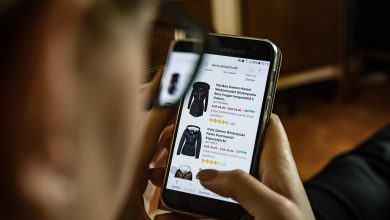The evolution of stylish school backpack design has moved way beyond basic functionality into genuine fashion territory where kids judge each other partly on backpack choices. What’s interesting is that the best modern designs manage to look good while still being practical, which wasn’t always the case when fashion-focused brands first tried making school bags. Getting both right requires understanding what makes a backpack visually appealing to different age groups while maintaining the ergonomic features and durability that parents care about, because a backpack that looks amazing but falls apart in three months is useless no matter how cool it is.
Color Psychology and Pattern Selection
Younger primary school kids gravitate toward bright, saturated colors and bold character designs featuring whatever’s popular that year. The challenge with character-focused designs is they date quickly – a pack covered in characters from a specific movie or show becomes uncool once that franchise fades, which might be less than a year after purchase.
Neutral base colors (black, gray, navy) with accent colors in straps or zippers offer more longevity because they don’t scream a specific trend. These color combinations work across multiple school years and appeal to kids from about year four onwards who start caring more about looking mature than having cartoon characters everywhere.
Geometric patterns, color-blocking designs, and gradient effects have become popular alternatives to character prints. These look contemporary without being tied to specific pop culture moments, which extends the pack’s useful social life. Some brands let kids customize panels or add patches, which provides personalization without permanently committing to one design theme.
Silhouette and Proportion Trends
The overall shape of a backpack significantly affects its visual appeal. Boxy, rectangular designs with sharp edges read as more mature and technical, which appeals to high school students. Rounded, softer silhouettes feel more approachable and work better for younger kids.
Proportions matter for how the pack looks when worn. Oversized, slouchy backpacks create a casual streetwear aesthetic that’s popular with teenagers, while compact, fitted designs look neater and more organized. The trick is matching the visual style to the actual carrying capacity needed – an oversized-looking pack on a year three student just looks wrong.
Front pockets can make or break the design aesthetically. Multiple small pockets create visual busyness that some people like and others find cluttered. Single large front pockets with clean lines provide a more minimal look that’s currently trendy in youth fashion.
Material Choices That Look Premium
The material finish affects perceived quality dramatically. Matte finishes on polyester or nylon look more sophisticated than shiny, plasticky-looking fabrics. Canvas or canvas-look materials convey a casual, classic aesthetic that appeals to specific demographics.
Texture adds visual interest without requiring colors or patterns. Ripstop nylon with its distinctive grid pattern provides both durability and a technical appearance. Heathered fabrics (where different color threads create a melange effect) look more expensive than solid colors even when they cost the same to produce.
Leather or faux-leather accents on bottom corners, zipper pulls, or logo patches elevate the entire design’s perceived value. Real leather is rare on school backpacks due to cost and maintenance requirements, but quality synthetic leather alternatives provide similar visual impact with better weather resistance.
Hardware and Detail Aesthetics
Zipper tape color (the fabric part of the zipper) offers design opportunities beyond basic black. Contrasting zipper tape in bright colors or metallic finishes creates visual interest and makes the backpack easier to use because the zippers are more visible.
Metal hardware in different finishes (brushed silver, gunmetal, rose gold, brass) allows for style variations without changing the basic pack design. These metallic accents catch light and add visual sophistication that plastic hardware can’t match.
Logo placement and size affect the overall aesthetic significantly. Large, prominent logos signal brand affiliation and work for kids who care about brand recognition. Subtle, minimal branding appeals to students who prefer understated style. Some brands offer the same pack design with different logo treatments to serve both preferences.
Functional Fashion Features
The best stylish backpacks incorporate practical features in ways that enhance rather than compromise the design. External laptop pockets with hidden zippers provide quick access without disrupting clean lines. Side pockets for water bottles can be designed to blend into the pack’s silhouette when empty rather than sticking out awkwardly.
Reflective elements serve safety purposes (visibility in low light) while adding contemporary technical styling. Strategic placement of reflective piping, logos, or panels makes the pack look modern and performance-oriented without being excessively sporty.
Convertible designs that work as both backpacks and tote bags appeal to older students who want style flexibility. Quality convertible designs maintain clean aesthetics in both configurations rather than looking like compromise solutions with straps hanging everywhere.
Age-Appropriate Style Evolution
Primary school students (ages 5-10) generally prefer fun, colorful designs with character or animal themes. Functionality takes priority over fashion at this age because parents usually make the purchase decision. However, incorporating current color trends or popular design motifs can make practical packs more appealing to kids.
Early high school (ages 11-14) represents the most fashion-conscious demographic for backpacks. Kids this age are acutely aware of peer judgment and want packs that signal their identity and taste level. Designs that reference streetwear, skating culture, or music scene aesthetics resonate strongly.
Older high school students (ages 15-18) often gravitate toward more mature, minimal designs that could work in university or professional settings. They want backpacks that don’t look juvenile but still accommodate school requirements like laptop protection and textbook capacity.
Balancing Trend and Timelessness
The challenge in school backpack design is creating something that feels current without being so trendy that it looks dated after one year. Classic designs with subtle nods to current trends offer the best longevity.
Modular elements like removable patches, swappable straps, or interchangeable panels let kids update their pack’s appearance without replacing the entire backpack. This approach reduces waste while allowing for style evolution as tastes change.
Color-limited editions and seasonal releases appeal to fashion-conscious consumers while allowing manufacturers to test new design directions without committing to large production runs. These special editions often become more desirable because of their limited availability.
Manufacturing Techniques That Enable Design
Advanced manufacturing techniques like laser cutting, ultrasonic welding, and 3D molding enable more complex and interesting designs than traditional cut-and-sew construction. These methods create seamless, sculptural shapes that weren’t possible with conventional techniques.
Sublimation printing allows for full-color, photographic-quality patterns across the entire pack surface without the texture or durability issues of screen printing. This enables intricate designs, gradients, and digital art that appeal to younger consumers.
Recycled materials and sustainable fabrics have become design features themselves, with brands highlighting eco-friendly materials as part of the aesthetic appeal. Packs made from recycled plastic bottles or sustainable fabrics can command premium prices when marketed properly to environmentally conscious consumers.
The intersection of style and function in school backpacks continues evolving as manufacturers realize that kids want both, and parents are willing to pay more for packs that deliver on both fronts rather than compromising one for the other.




